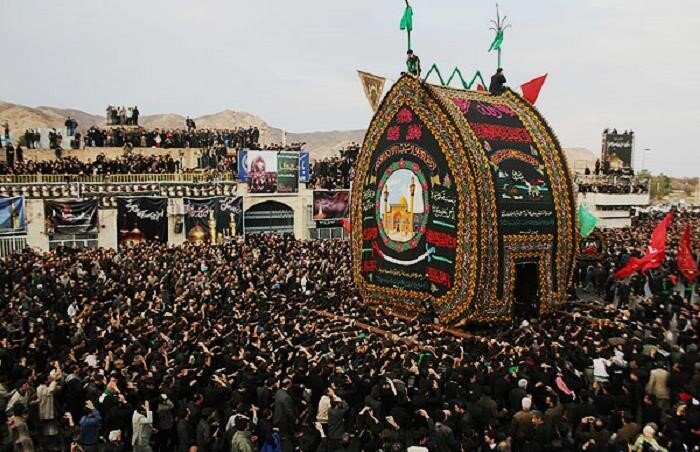Muharram mourning: A glimpse of indigenous rituals across Iran

TEHRAN - Every year, people in different parts of Iran hold rituals to commemorate Muharram mourning season gloriously in public. The commemoration of the battle of Karbala on the day of Ashura (10th day of Muharram) and the epic passion and courage of Imam Hussein (AS) and his 72 loyal companions who were all martyred (in 680 CE) is annually honored by Iranians.
During centuries, the mourning rituals for the martyrdom of Imam Hussein (AS) and his companions, have been held differently in every part of the country regarding local rituals and values. However, the common aspect of the rituals is the gathering of people for the mourning ceremony, which reminds Muslim unity. Besides, these gatherings survive the narrations of the event and help to transmit them into the next generation. Traveling to different cities of Iran during the month of Muharram, one can witness different types of mourning rituals:
Nakhl Gardani, Yazd
One of the Muharram mourning rituals, which is held in Yazd annually is named Nakhl Gardani. Yazdi people prepare the renowned ancient Nakhl, a wooden structure resembling a bridal pavilion and decorated with colorful silk shawls, precious fabric, mirrors, lanterns, and lift it and carry across the city.
While carrying in different parts of the city, the eulogists narrate the Ashura event and the life story of Imam Hussein (AS) and his companions. All attendees wear black dresses.
Yazd is considered as one of the most crowded cities of Iran in Ashura. Hence, it is known as Iran’s Hussainiya (a congregation hall for Shia Muslim commemoration ceremonies, especially those associated with the Mourning of Muharram). Hence, it would be a great experience to be there on Ashura!
Origin of Nakhl
Although nakhl means palm tree in Persian language, it is not to do with the palm tree in Nakhl Gardani. It is a symbol of the coffin of Imam Hussein (AS), which is used during his symbolic procession ceremony.
Leave a Comment